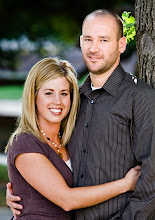Megiddo

Our first stop was Megiddo. This was another tough place to visit due to the pagan Ba’al worship that was practiced here. Throughout the scripture Megiddo is mentioned several times.
Joseph defeated the king of Megiddo during his conquest (Joshua 12:7, 21). During the time of the Judges God allotted this city to the tribe of Manasseh, who failed to drive out all the Canaanites (No.33:52; Judges 1:27). Solomon fortified this city as a place of defense (1 Kings 9:15, 10:26). Probably the most popular thing Megiddo is known for is the battle of Armageddon. This is when last great gathering of armies (good vs evil) will take place at the end of the tribulation, just before Christ returns to establish His kingdom (Rev. 16:13-16). In Hebrew, Har Megiddo, often translated Armageddon, means the “Hill of Megiddo.”

When we visited we focused on the Canaanite practice of Ba’al worship which revolved around the cycles of nature necessary for survival and prosperity, namely, growing crops, raising livestock, and the growth of human populations. There are so many gross practices of this pagan worship that I can’t recount them all there. Some of the worst parts are the practice were unnatural orgies and infant sacrifice, both led by the priests and priestesses.

Ba’al had a mistress named Ashora, in Greek she is called Ischtar, and in English she is called Easter. She was considered the goddess of fertility and her ancient symbol was a rabbit and an egg. Makes you think twice about the Easter egg hunt, especially if you have been there and realize its origins. It is perhaps one more way we as Christians could be set apart (sanctified) from one of the seemingly innocent practices of the world. We should celebrate the true reason for the season, the resurrection of our Lord and Savior Jesus Christ. We learned that Easter day would be better referred to as Resurrection Day! Amen?
Mount Carmel

Interestingly, our next step of Mount Carmel, which was considered Ba’al country and the place associated with its practice in Israel. We climbed to the top and saton the cliff and studied how when Ahab was king over Israel he had no problem dishonoring God and even strived to provoke Him to anger (1 Kings 16:29-33). He even went as far as to marry a foreign woman named Jezebel and allow her to worship her pagan god Ba’al (this is the exact reason God forbid Jews marrying foreign women). Ahab even set up an alter and a Temple to Ba’al and Easter (aka. Ashora or Ischtar) in Samaria.

The greatest thing about our visit here is when God proved Himself as true and Baal as false. This is where the prophet Elijah called down fire from heaven when the prophects of Ba’al could not. I would encourage you to read the biblical account in 1 Kings 18:16-45, esp. vs. 39 where the people fall prostrate and cried out the Lord of Elijah, “the Lord-he is God’” referring to the God of Israel as the true God! Read and celebrate God’s victory over pagan worship and pagan practice. Then think about how we can bring the light of Christ to a dark world. Not by imitating them in ignorance but showing how the One we worship is the only true being worthy of worship and how we celebrate Him alone. How has God called me to reflect the truth of Christ in a dark world of paganism?
Olive Grove

At the bottom of Mt. Carmel is one of the oldest working olive groves in Israel. In Romans 11 Paul used the olive tree as an illustrative picture of the union between the two people’s of God, Israel and the Church (Romans 11:17-24). Basically, the nation of Israel is the root of our faith and the Church is an olive shoot that has been grafted in due to Israel’s unfaithfulness. However, we must never forget God’s original chosen people and the promises He has made to them. He has not forgotten the nation of Israel! We honor the nation of Israel as we participate in some of the blessings promised to her as a result of being grafted in as the new chosen people of God, the Church. The Bible Knowledge Commentary and the Nelson’s Commentary have great explanations of this passage.

Caesarea by the Sea
We traveled to the Mediterranean Sea and visited the ancient city of Caesarea. This city was founded by Harod the Great in 22BC and was the place of Roman government for over five hundred years. Caesarea was the home of Roman procurators, included Pontius Pilate. It was really cool to visit because half the book of Acts takes place here. Philip took the gospel here (Acts 8:40), Peter took the gospel to Cornelius and the Gentiles (Acts 10), Paul sailed to Tarsus from here after his conversion (Acts 9:30) and all of Paul’s missionary journeys either began or ended here. Paul stopped here while traveling from Ephesus to Jerusalem (Acts 18:22), he was taken here by soldiers when the Jews sought to kill him (Acts 23:23-33), he was imprisoned in the palace here for about two years (Acts 23:35), and Paul’s three defenses were made here, before Felix (Acts 24), before Festus (Acts 25:1-12), and before King Agrippa (Acts 26).

This was a great place to visit and soak in the place where so much New Testament history happened as the church was being established.


